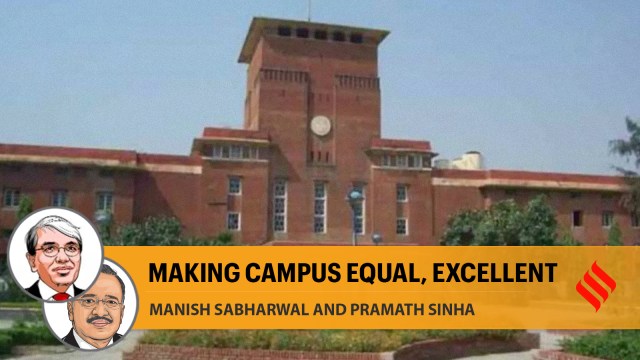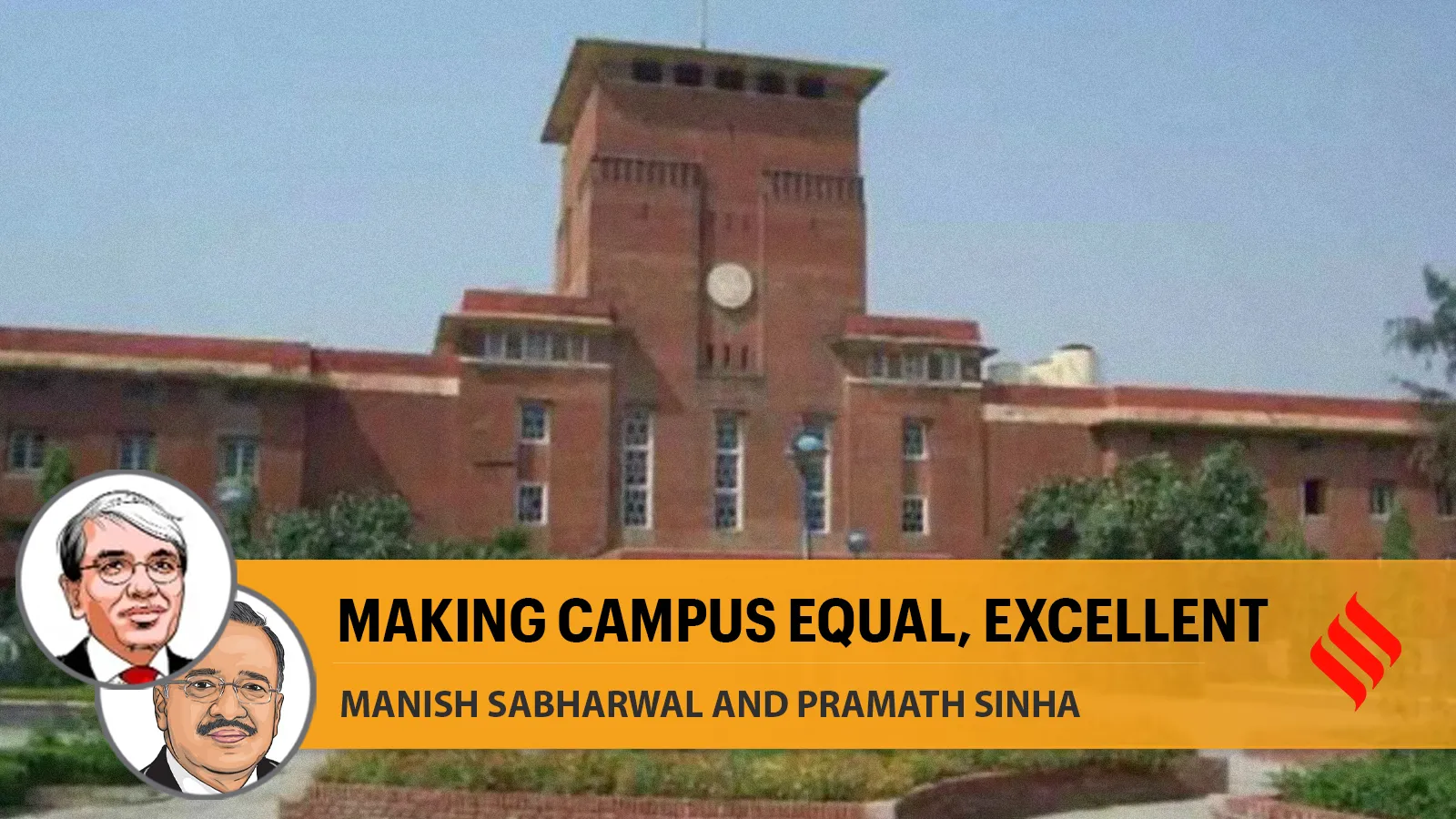
Written by Manish Sabharwal and Pramath Sinha
The golden rule of modern higher education — those with the gold rule — has infuriated teachers, parents and policymakers for centuries because making universities equal (low fees) conflicts with excellence (high costs). Public funding breaks this tyranny, but India’s public debt — already 85 per cent of GDP — can’t expand indefinitely or infinitely without us being irresponsible ancestors. Thankfully, the conflict between equality and excellence is being broken by new non-profit Indian universities that raise money for endowments and scholarships while using differential student fees to cross-subsidise. Over time, these universities will improve our science and technology game, reduce Indian enrollment in mediocre overseas universities, and raise international student enrollment in India.
A great university has low fees and high costs (quality faculty, rigorous research and a nice campus). In contrast, low fees and low costs create low quality, while high fees and high costs create exclusion. In theory, public universities have what Hungarian economist Janos Kornai called soft budget constraints — they can get higher government allocations irrespective of performance. In practice, even high-quality public universities in rich places like California, Canada and England face brutal budget cuts because of the cost disease (productivity in education can’t rise as fast as costs do), policy-mandated fee caps, and tighter visa regimes for full-fee-paying international students. Higher education regulators in England and Canada suggest 40 and 50 per cent of their institutions will run a deficit this year. US universities have an endowment of over $800 billion but massive inequality: 20 of its 5,000+ universities account for 50 per cent of this money.
Our civilisation recognised the power of learning centuries ago — Vidya Dadati Vinayam, Vinaya Dadati Patram (knowledge gives humility, which gives capability) — but public funding faces the tyranny of dividing money between K-12 schooling, vocational training and universities. All three matter, but the first two deliver more inclusive public goods and face financing market failures. Colleges create wage premiums and have more options for funding. Consequently, about 75 per cent of India’s 40 million university students study in non-profit, non-government institutions (only 25 per cent of America’s 18 million and 15 per cent of the UK’s three million students do so). The global resource challenges of government-funded higher education will only increase with ageing, technology’s deflationary impact creating employed poverty, and a ravenous welfare state.
Empire of Ideas by William Kirby suggests leaving out universities from studies of global political and economic power in the last three centuries has been a mistake. In the 17th and 18th centuries, France dominated Europe more by its ideas than military prowess. Elites from Cambridge and Oxford ensured many British-modelled institutions in their colonies. German universities became the destination of choice for scholars because they redefined what universities could be. And the “American century” was partly fuelled by the prestige and alumni of its universities. Kirby’s thesis reinforces our belief that 20 Indian universities among the world’s top 100 are a national security goal for the next decade because shastra & shaastra (knowledge and weapons), vidya & vikas (learning and development), and praudyogiki & pratibha (technology and talent) are inseparable.
Ironically, the golden rule of education is being broken by enlightened gold that recognises supporting higher education improves India’s infrastructure of opportunity. A new crop of innovative Indian non-profit universities are diversifying their funding beyond fees. Only 4 per cent of the costs of Azim Premji University are met by fees — this is similar to central government-funded Delhi University — because it started with more endowment than what the US’s prestigious Brown University had accumulated over a century. The endowment raised by the Indian School of Business (ISB) from multiple donors has allowed it to innovate and take the long view; it ranks highly in global business school rankings without offering an MBA “degree”. Over 200 donors have enabled Ashoka University to offer 24 per cent of students a 100 per cent tuition waiver and 60 per cent some financial aid.
The biggest challenge for non-profit universities is convincing philanthropy to fund revenue expenses because it is easy to confuse university buildings with building universities. However, software trumps hardware; what makes universities great is the quality of their faculty. The coming tsunami of AI and virtual reality promises to revolutionise the role of teachers and will finally — and thankfully — make that awful noun and verb “lecturer” obsolete. The best teachers in the next few decades will use technology but recognise that humans have an unfair advantage in being human. They will combine being an adhyaapak (information provider), upadhyay (combiner of information and knowledge), pandit (deep subject knowledge), acharya (imparts specific skills), drushta (visionary view of a subject) and guru (awakens potential). However, the notion that the spiritual rewards of teaching compensate for fair financial rewards is flawed if our goal is attracting quality talent and retaining them in India. While the new wave of non-profit universities has built a strong track record of not loading capital expenditures onto fees, the next frontier for them is raising untied funding for operating costs. Early trends in scholarship funding commitments and research grants augur well.
In his autobiography, Avoid Boring People, James Watson, the co-discoverer of DNA’s structure, reflects on a lifetime in science and suggests, “Don’t back schemes that demand miracles”. The first best option for financing universities is a massive expansion of government funding, but that scheme demands a miracle. Life is second best at best. We must acknowledge government budgets’ acute and chronic constraints and recognise that school and vocational education have higher moral claims on that finite money pool. Instead of more cooks in the kitchen, let’s try a new recipe: Non-profit universities offering equality and excellence through cross-subsidised fees, scholarships, and endowments. It is an equal and excellent future for higher education that must be encouraged and expanded.
The writers are co-founders of Teamlease Services and Ashoka University, respectively



